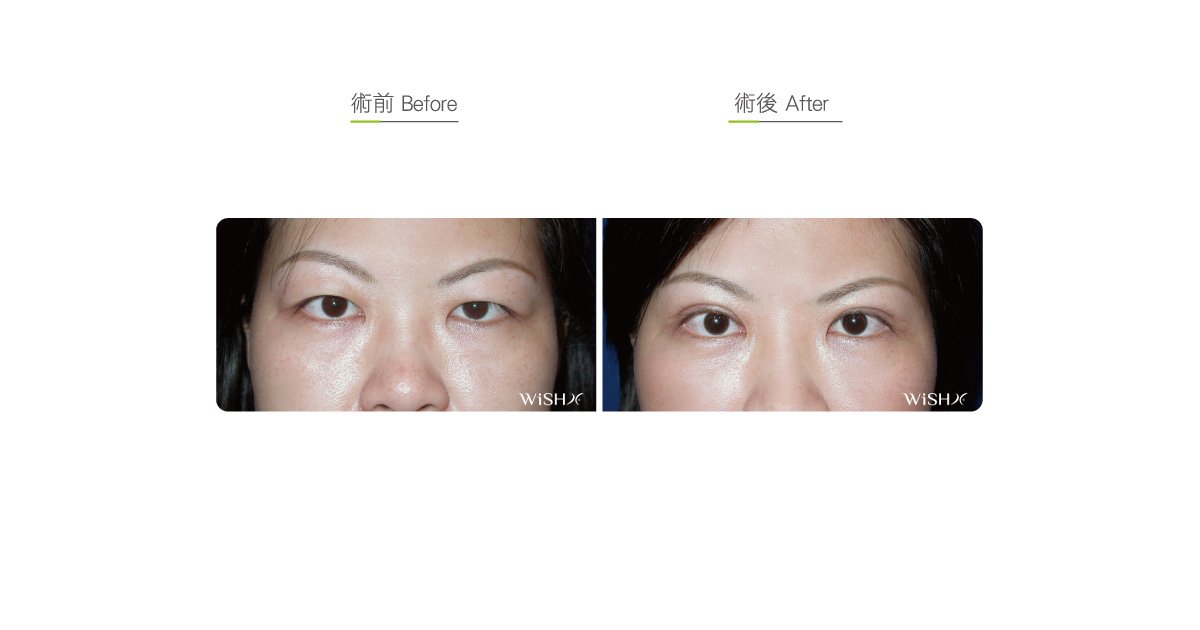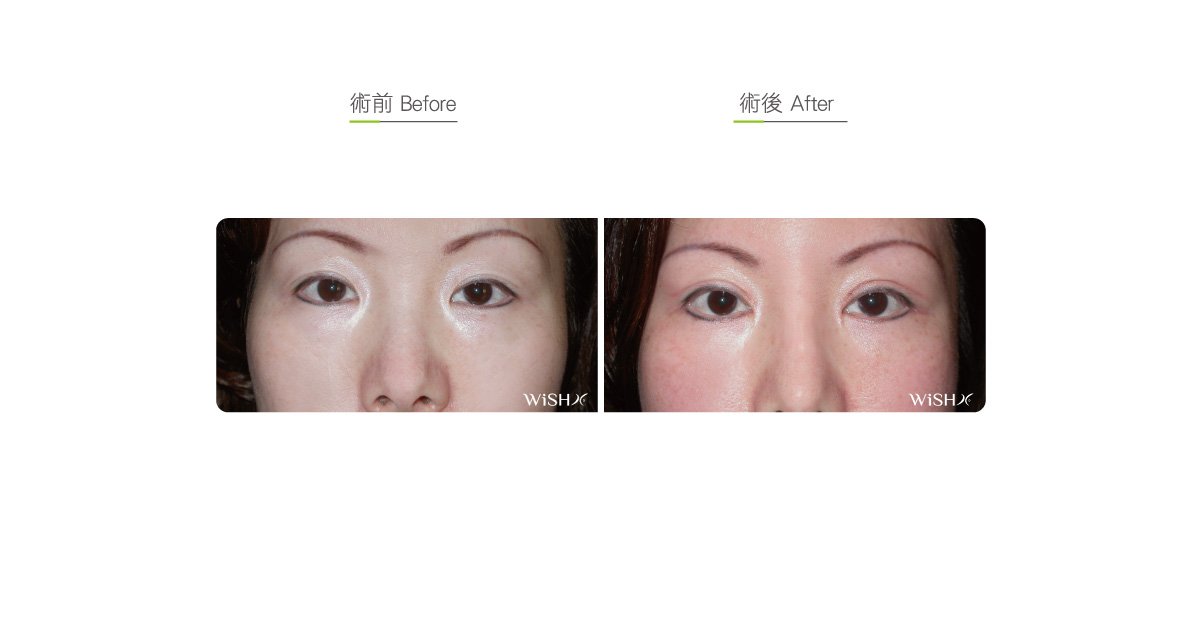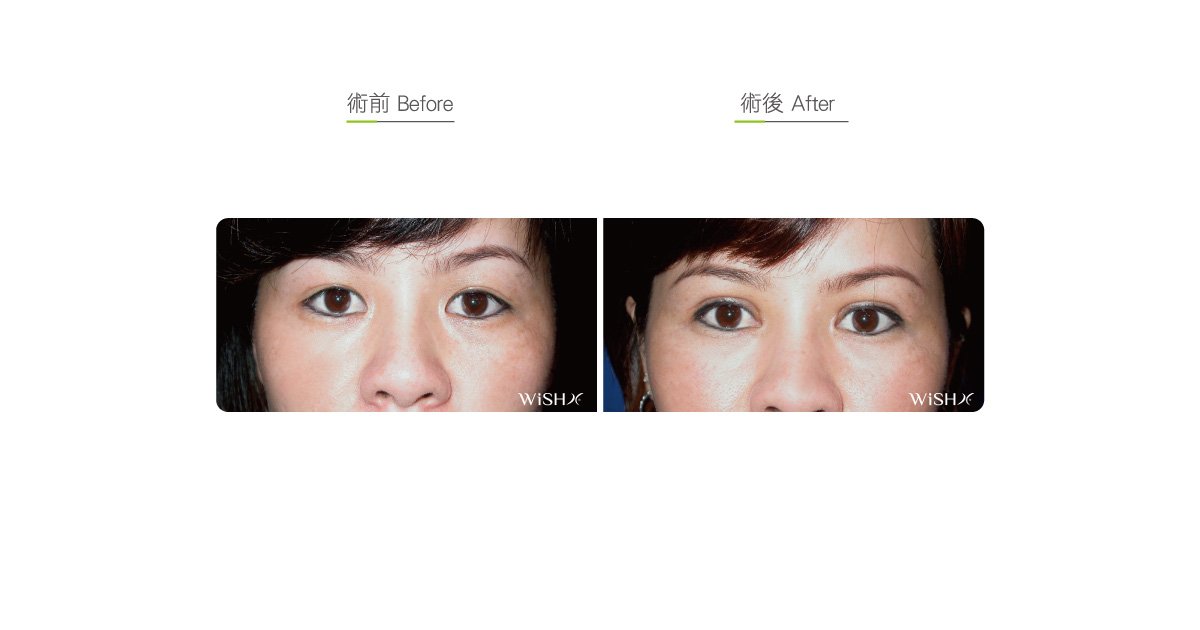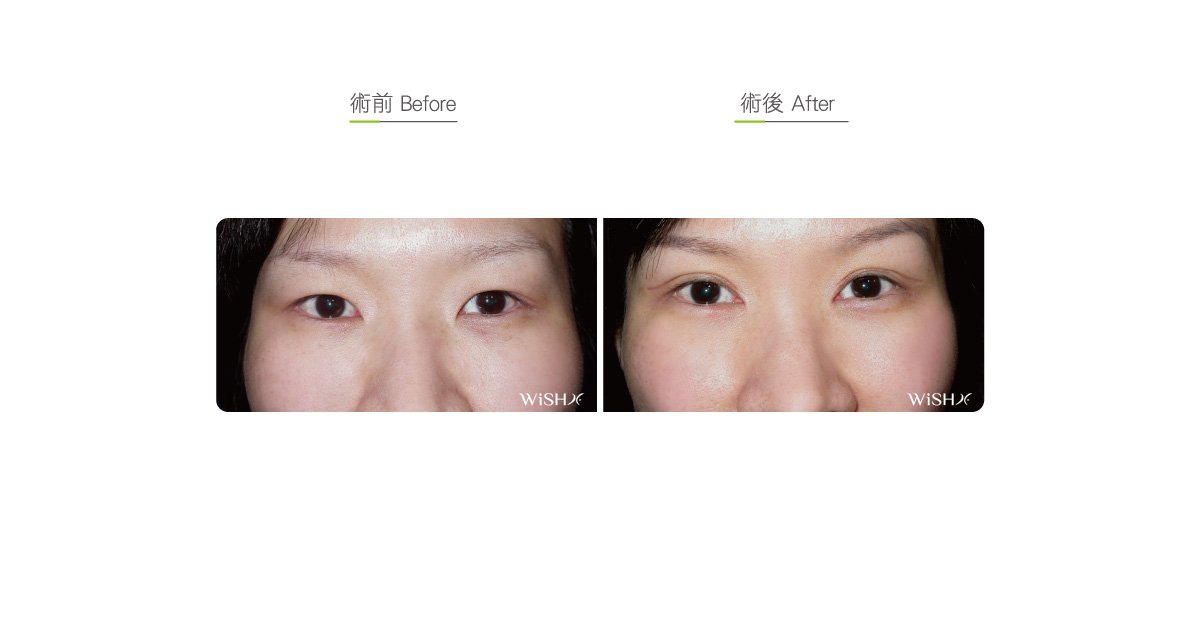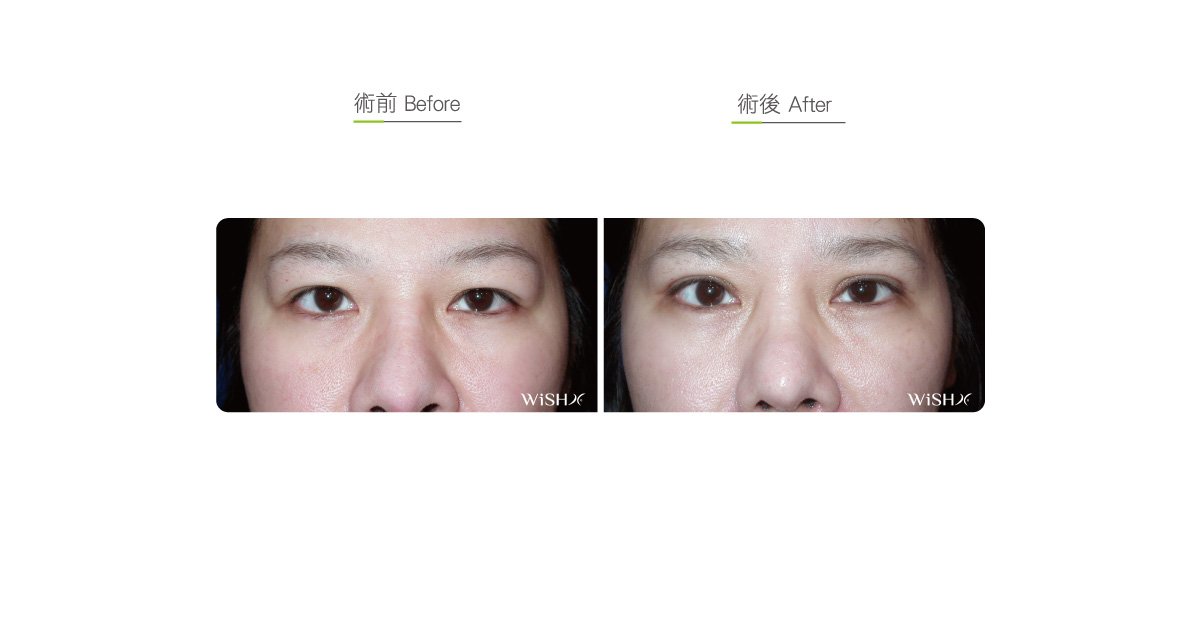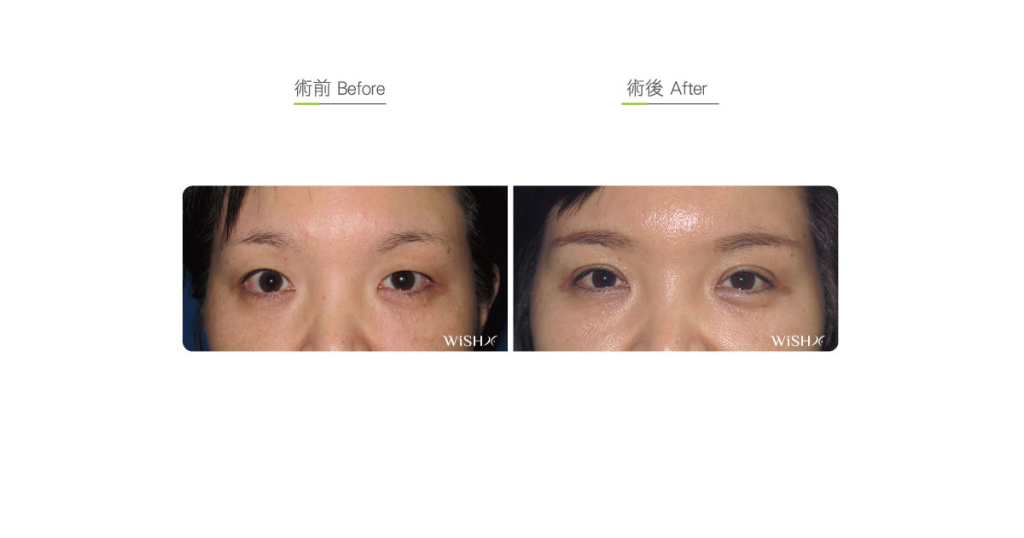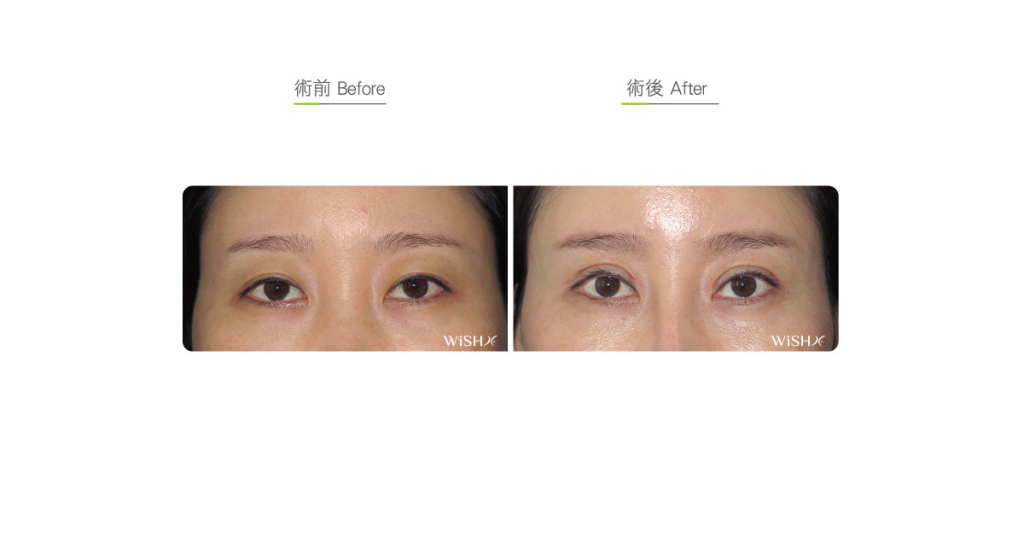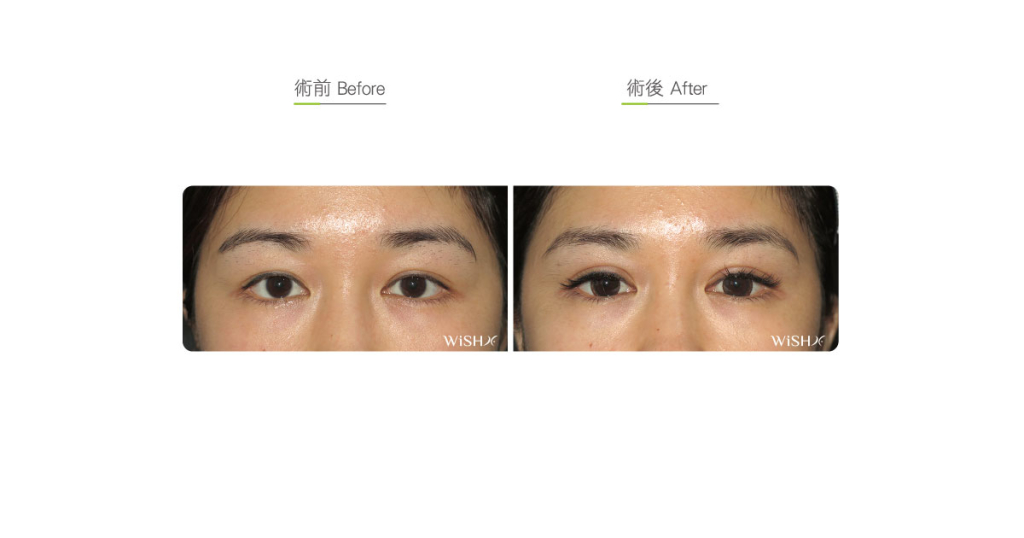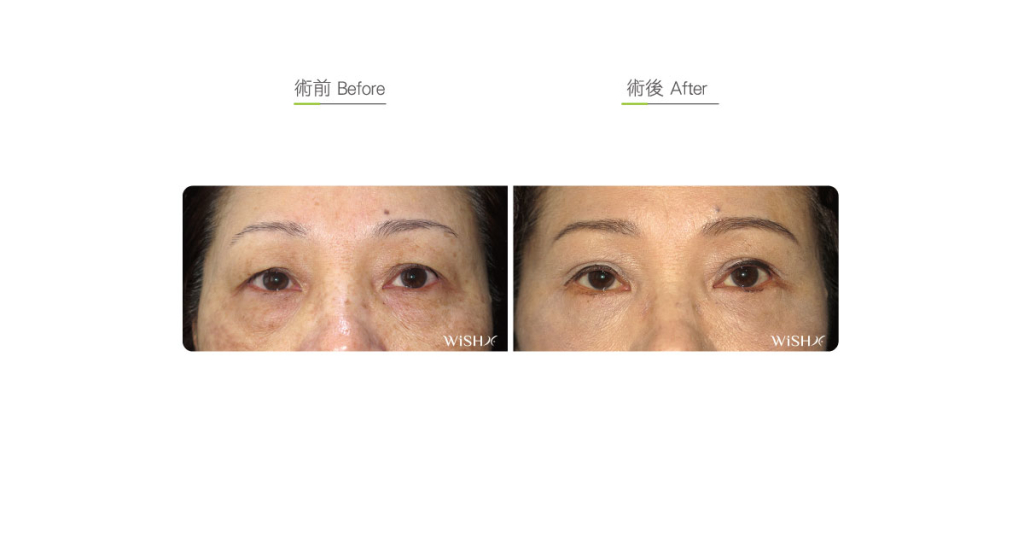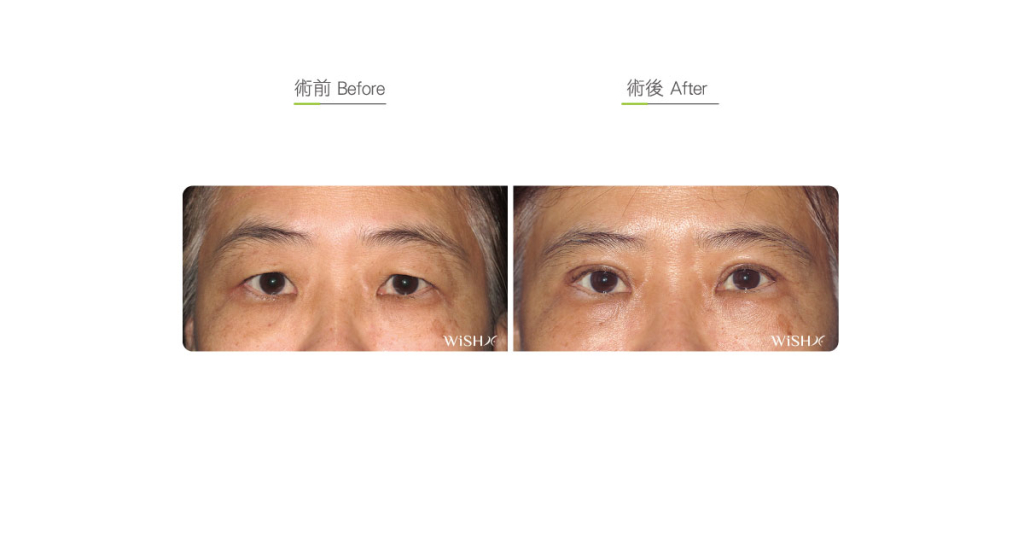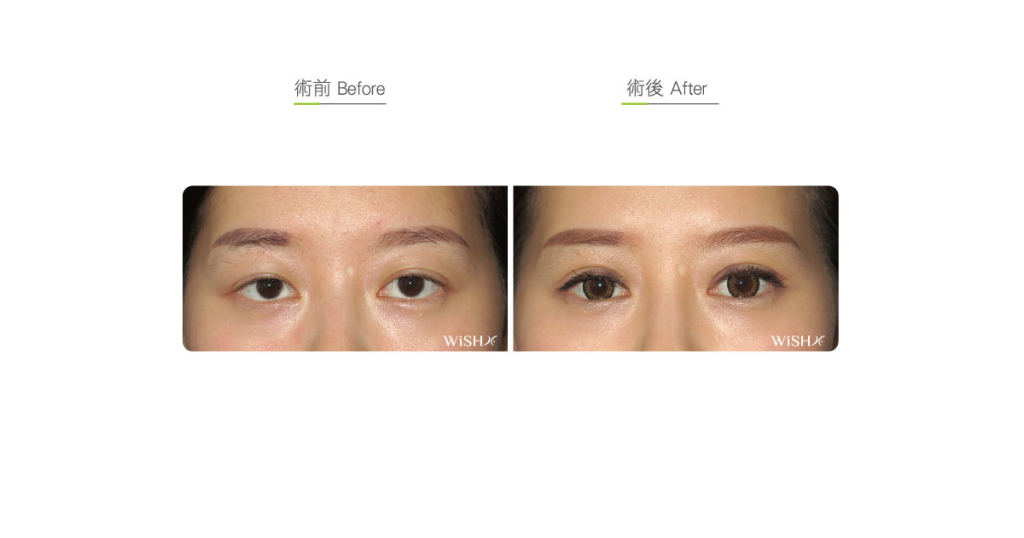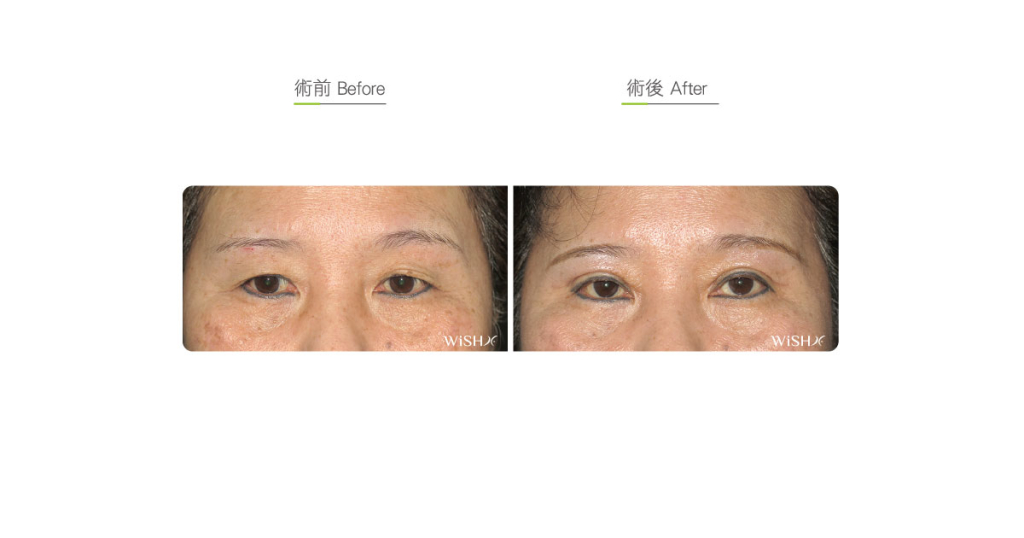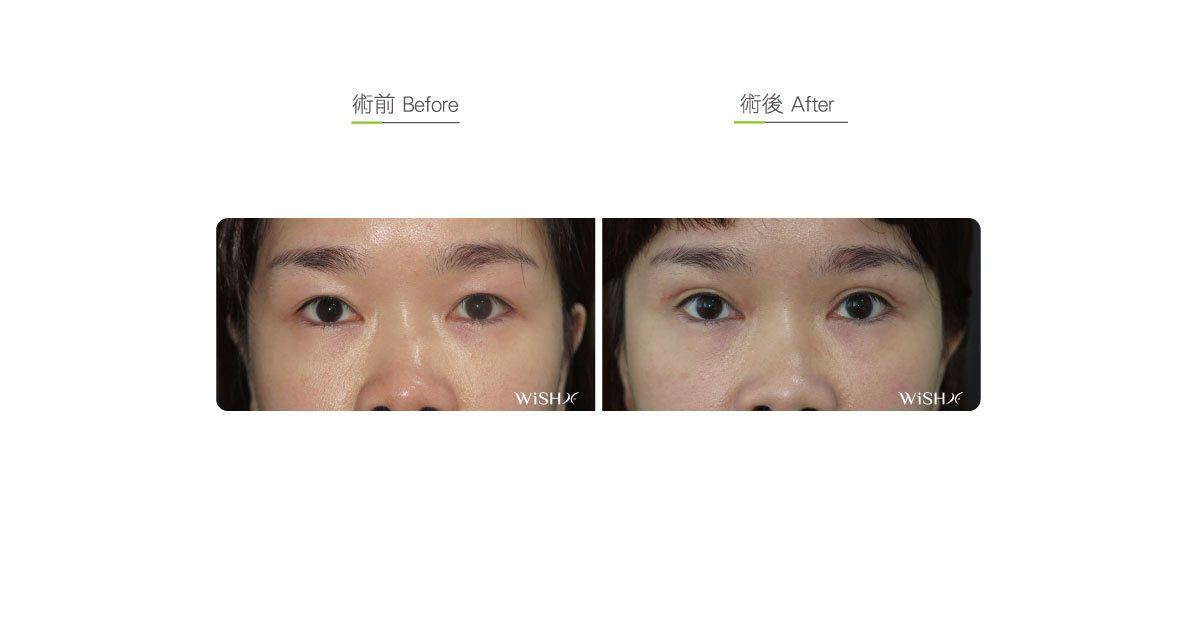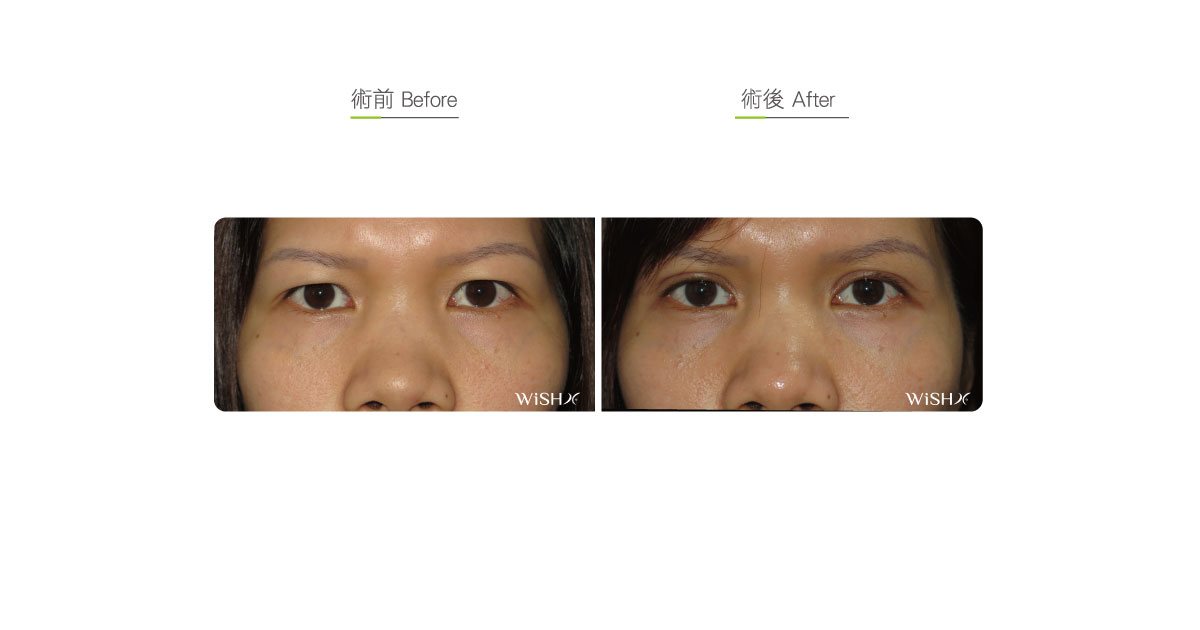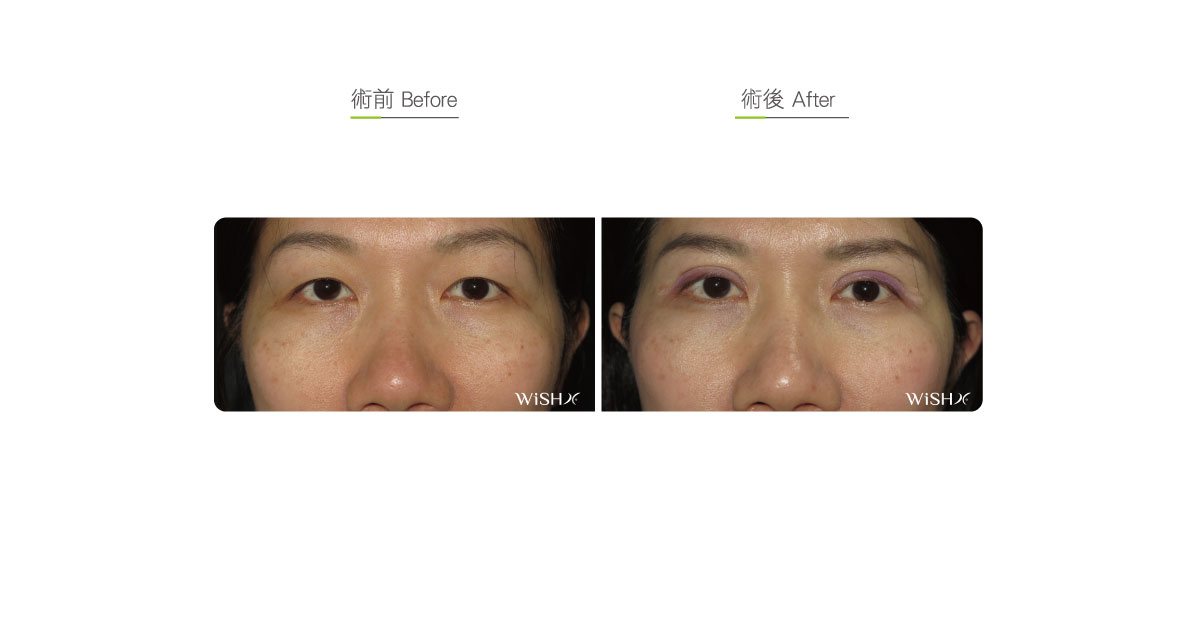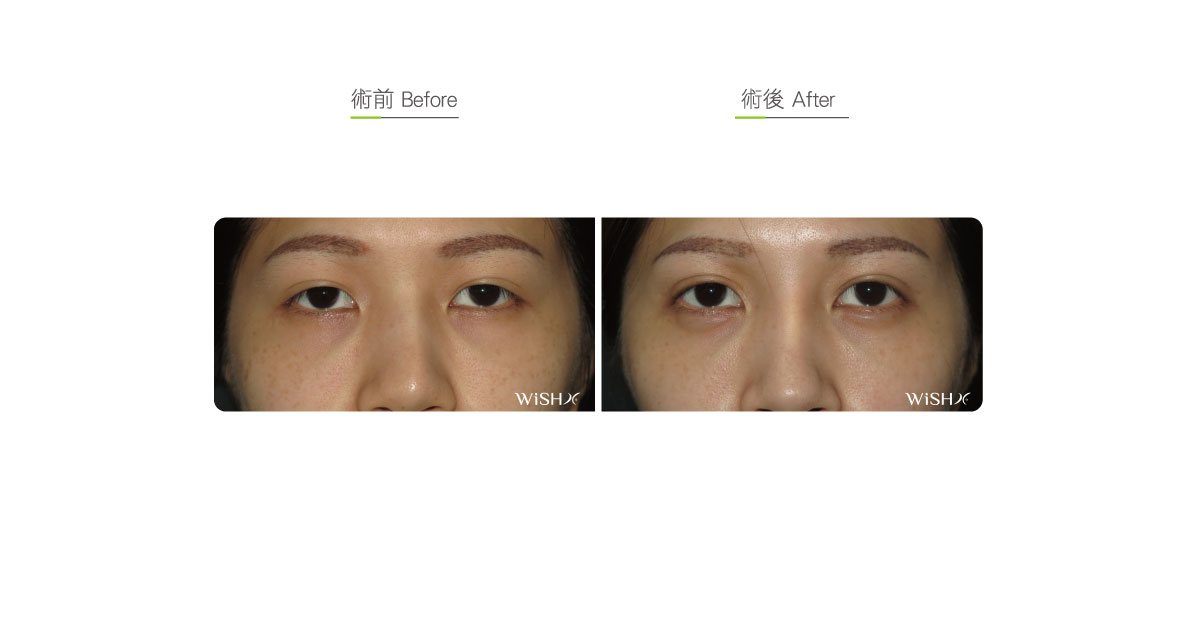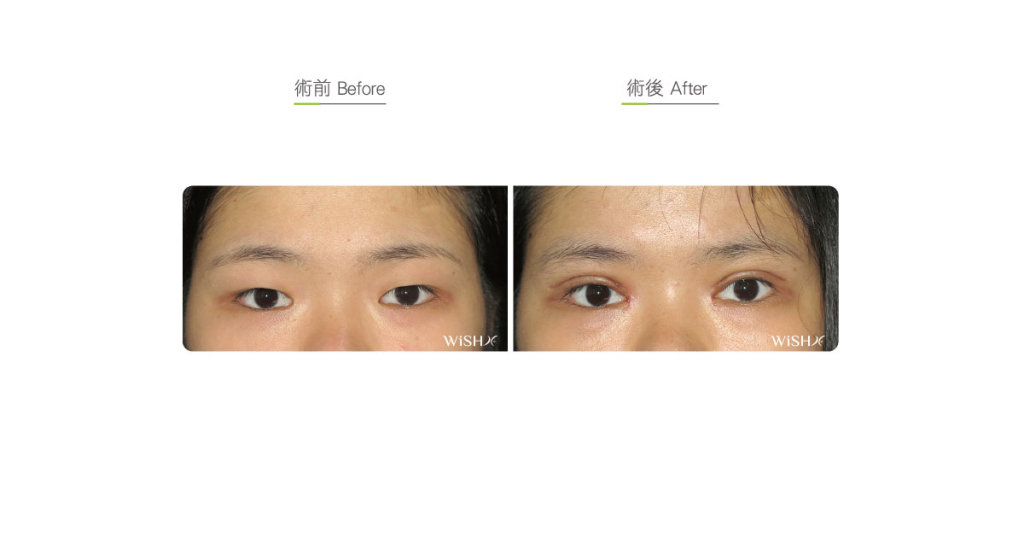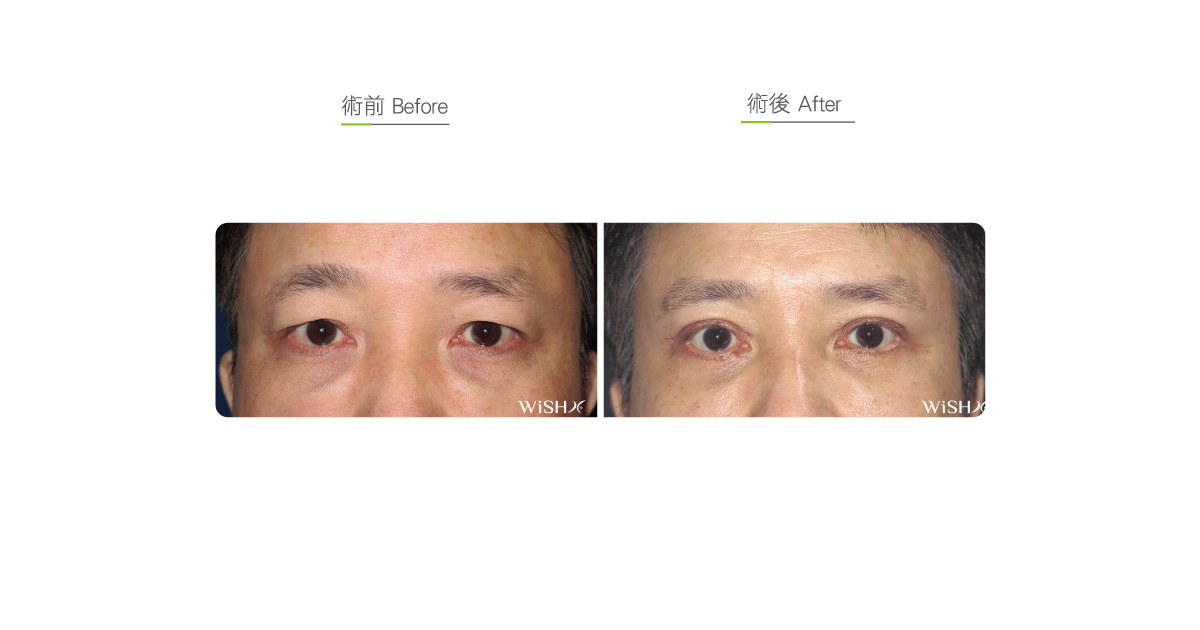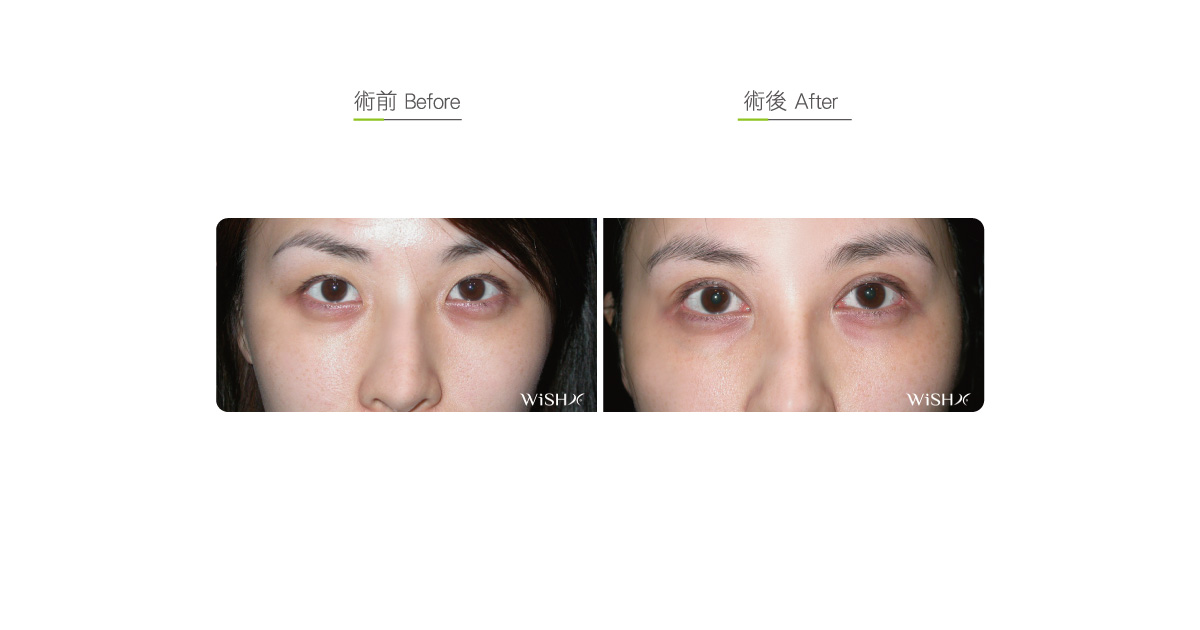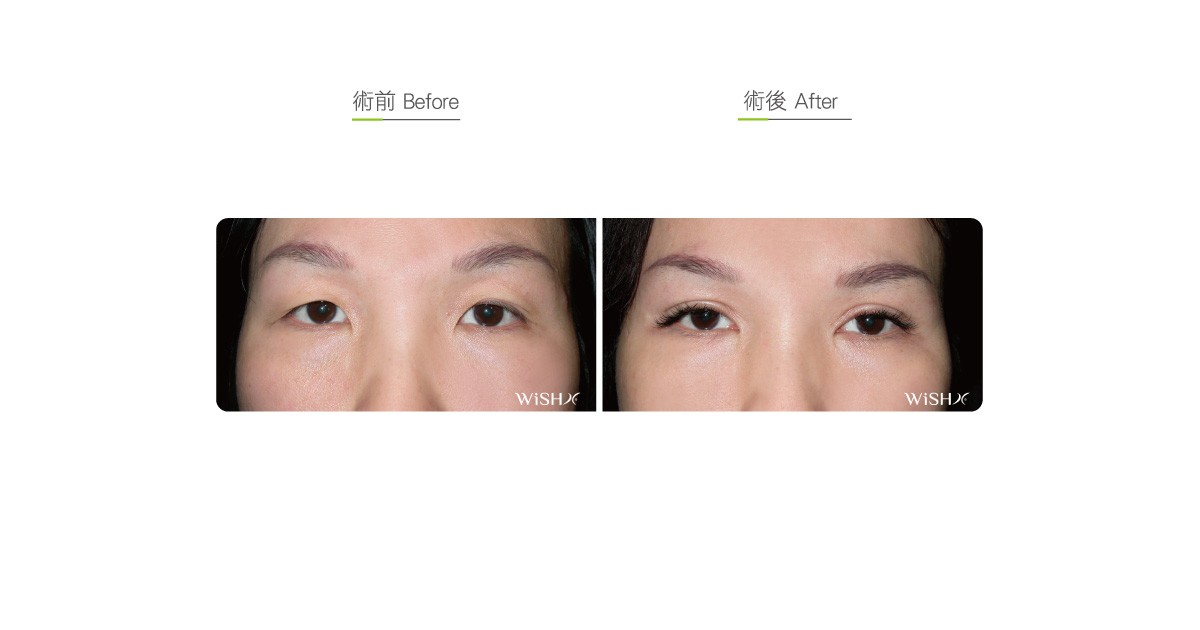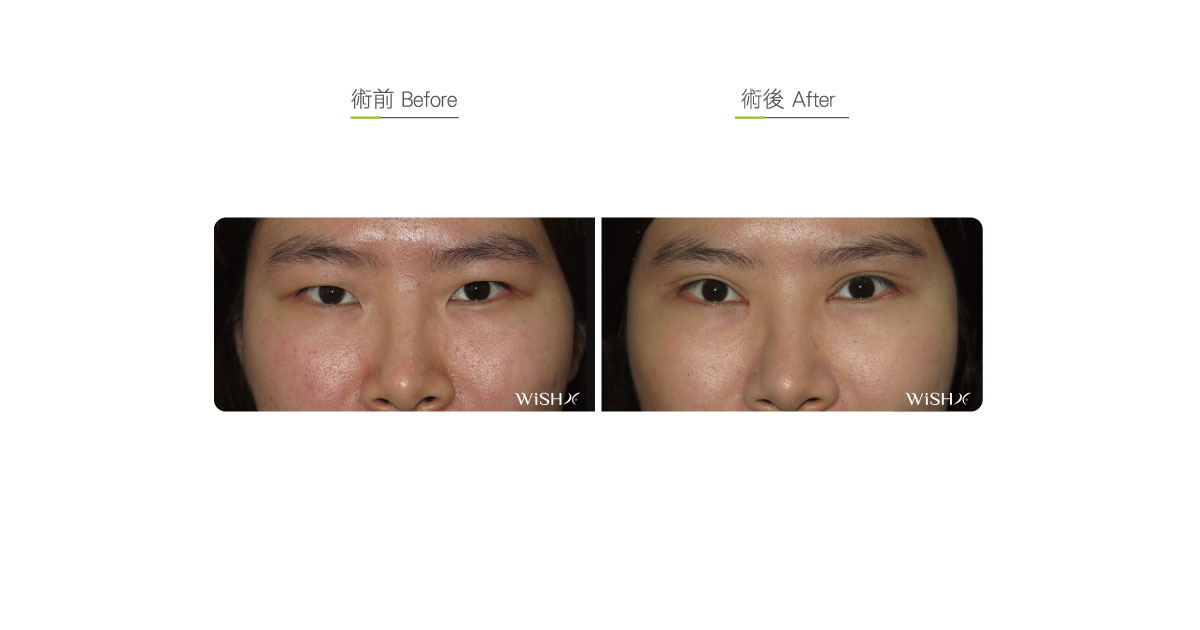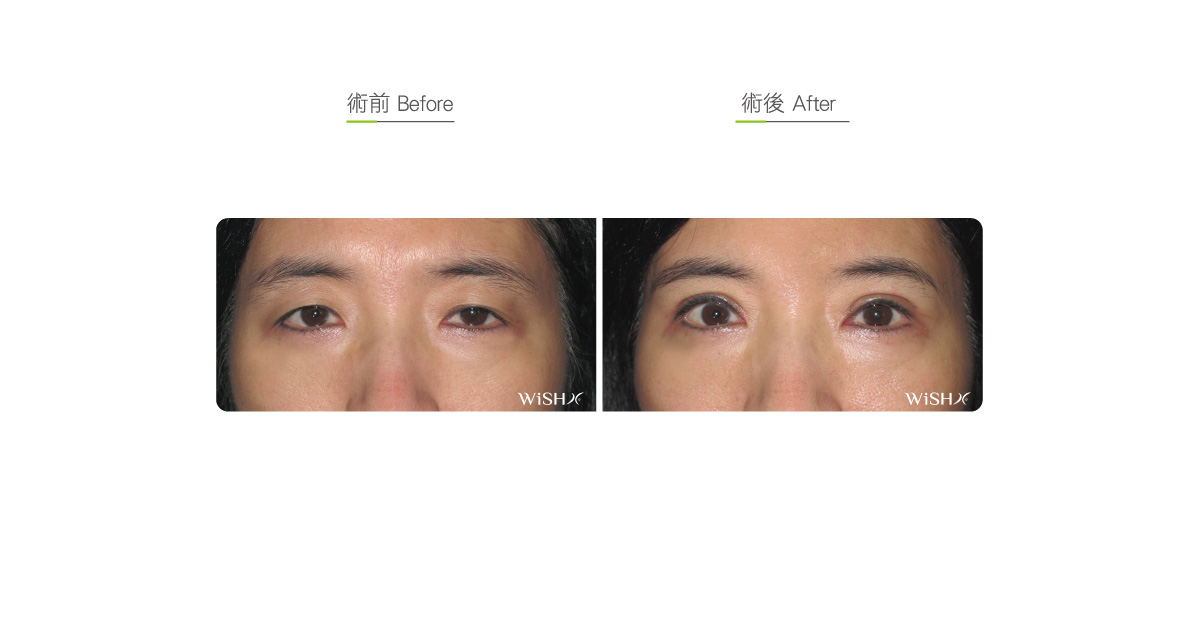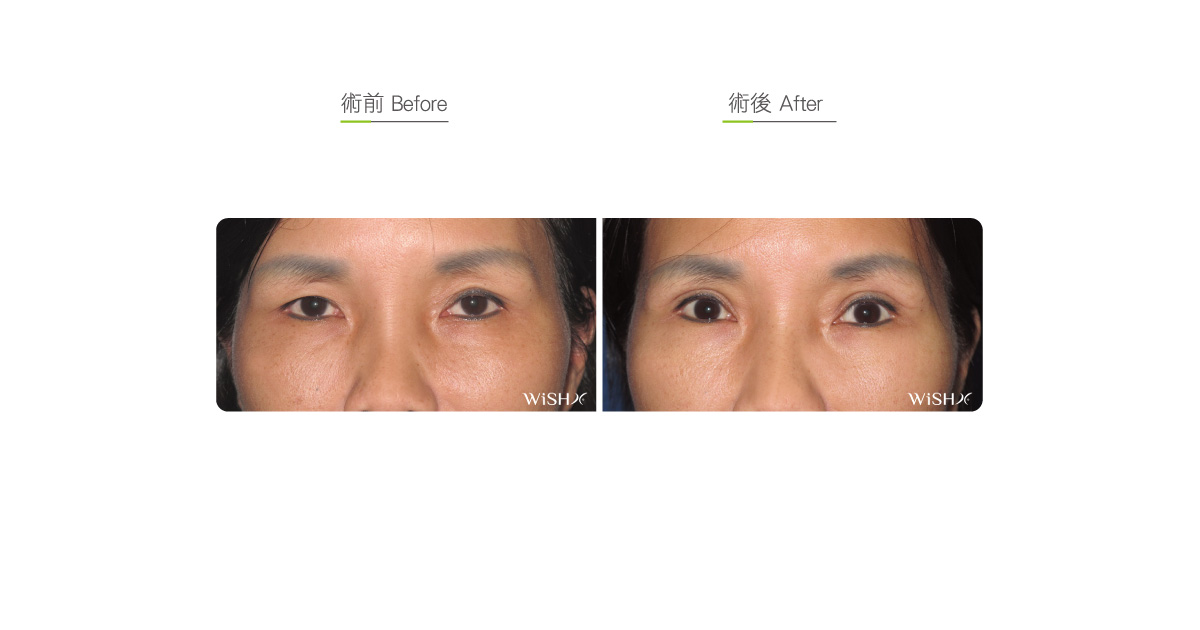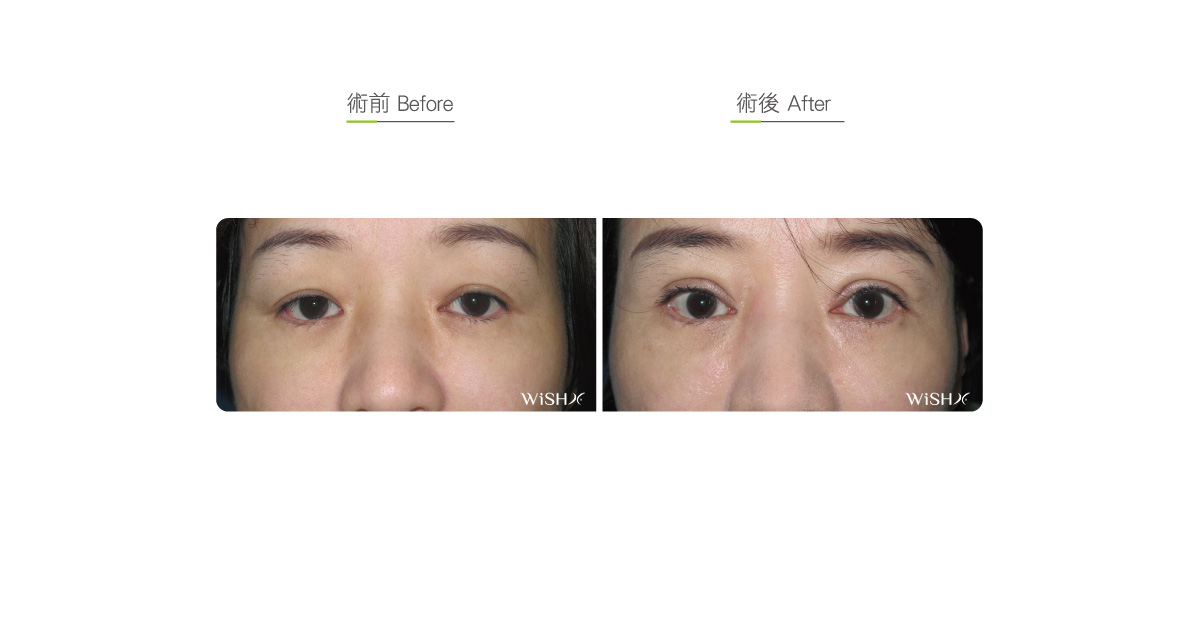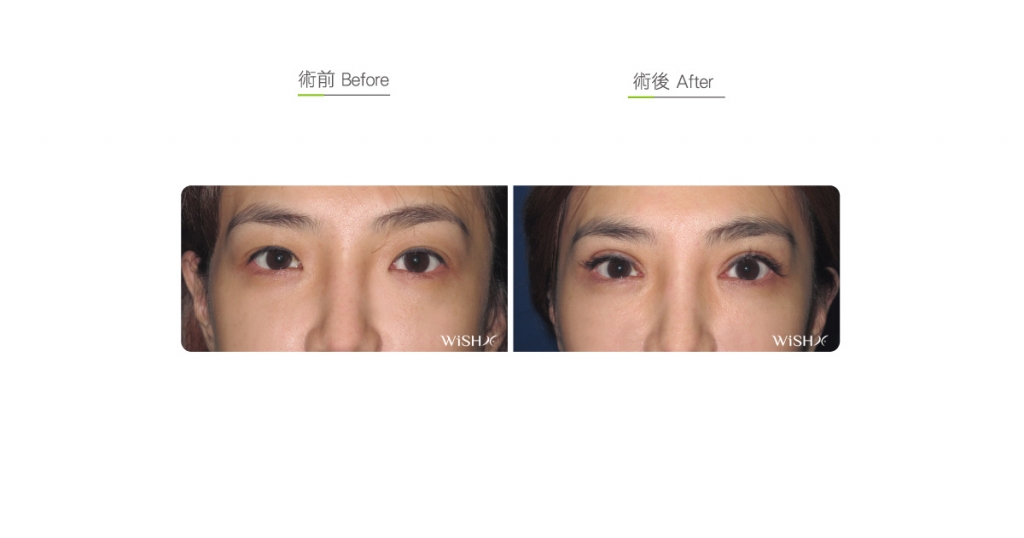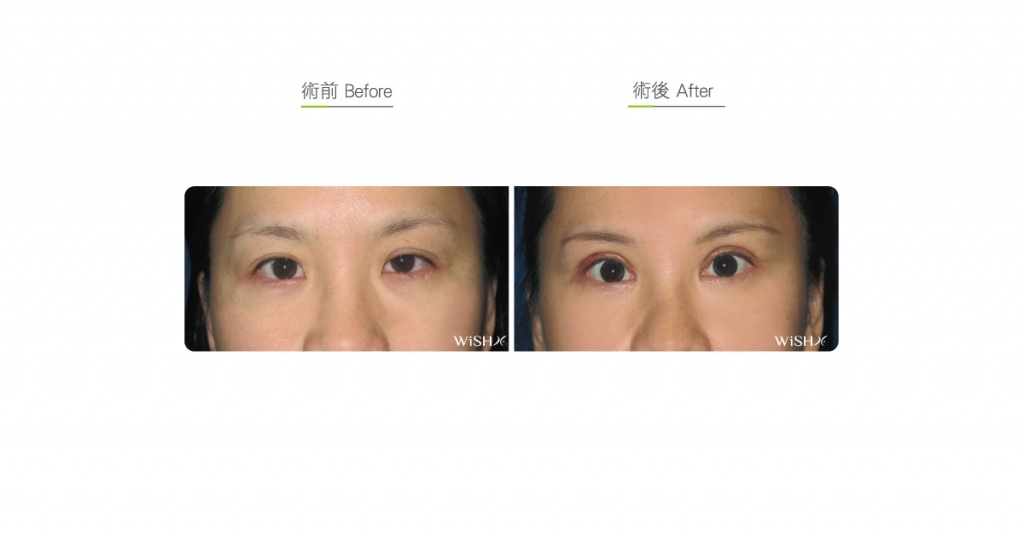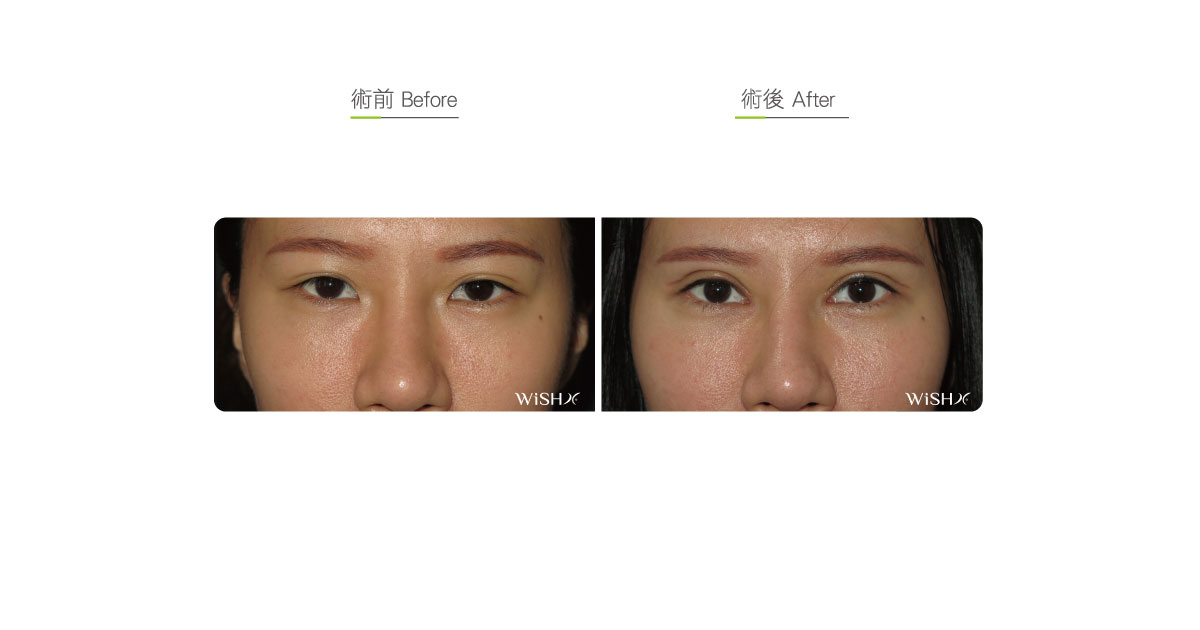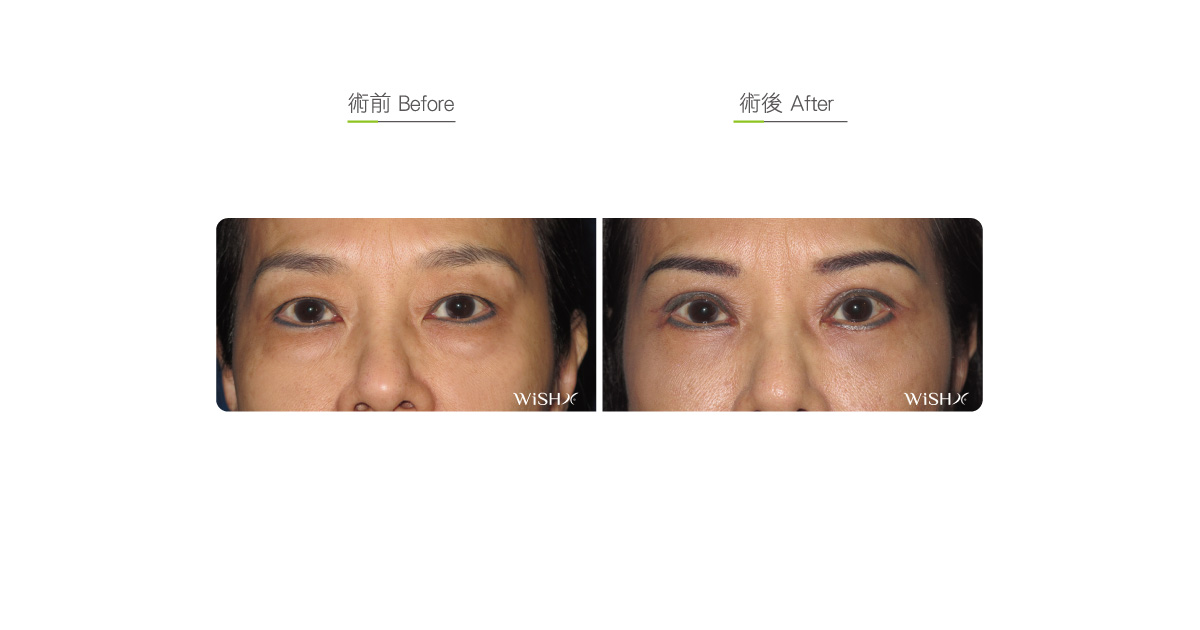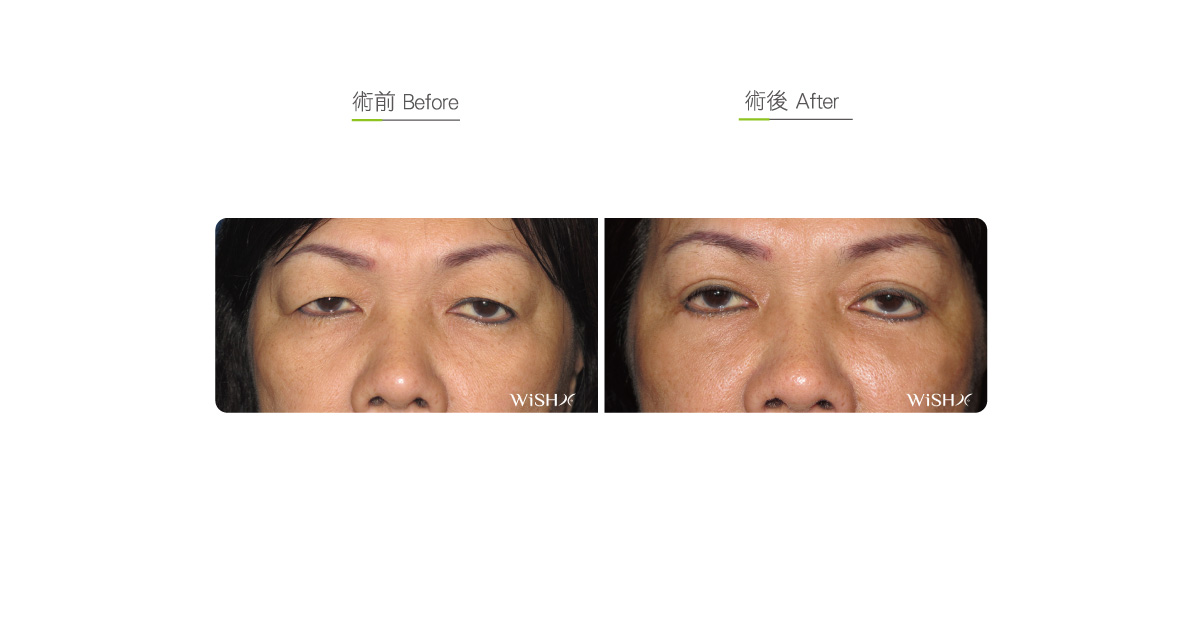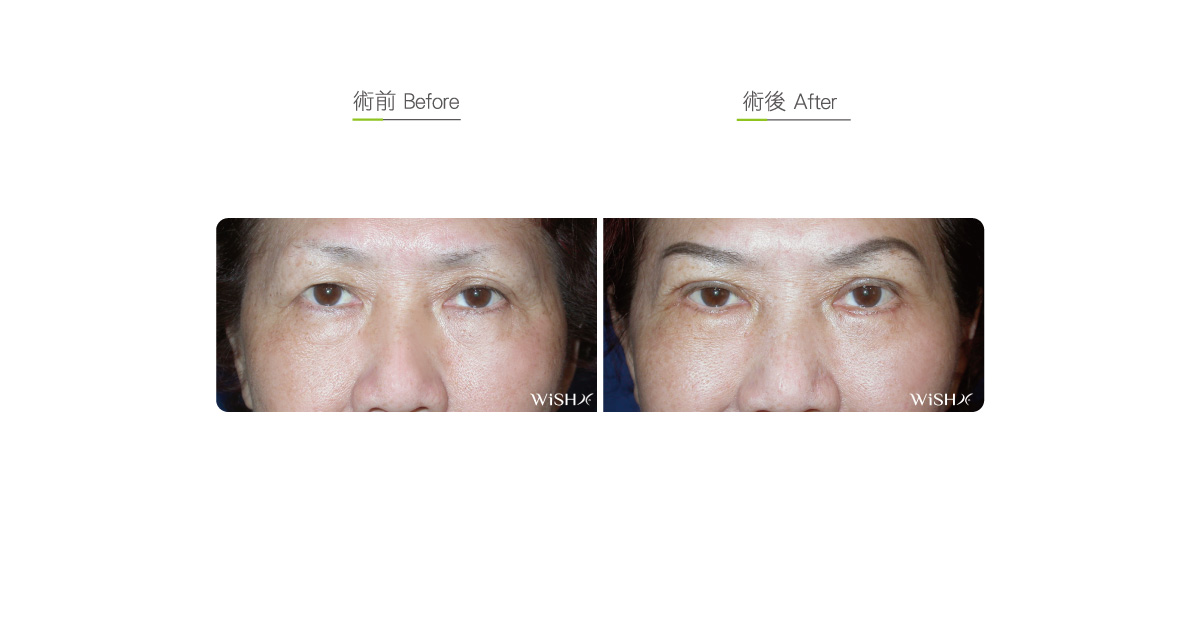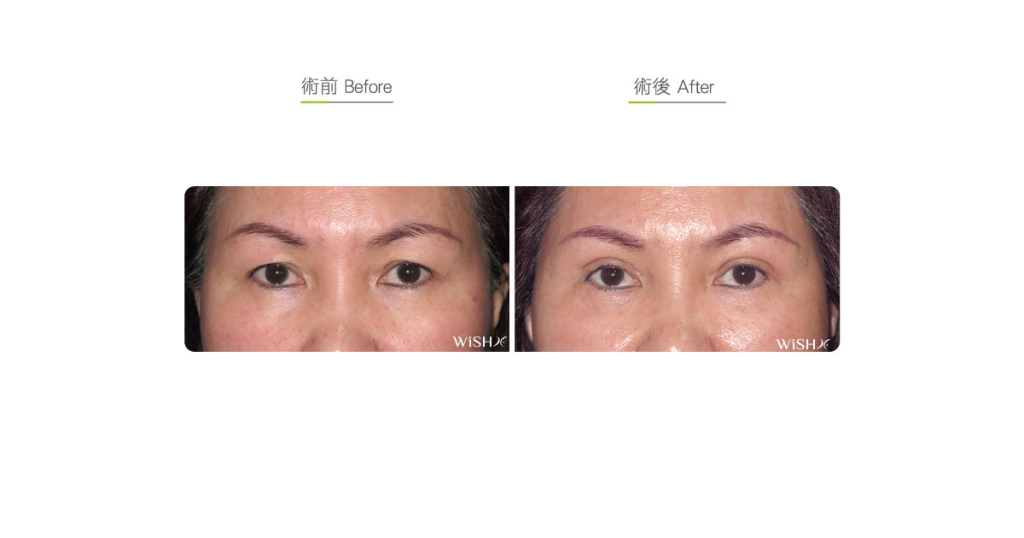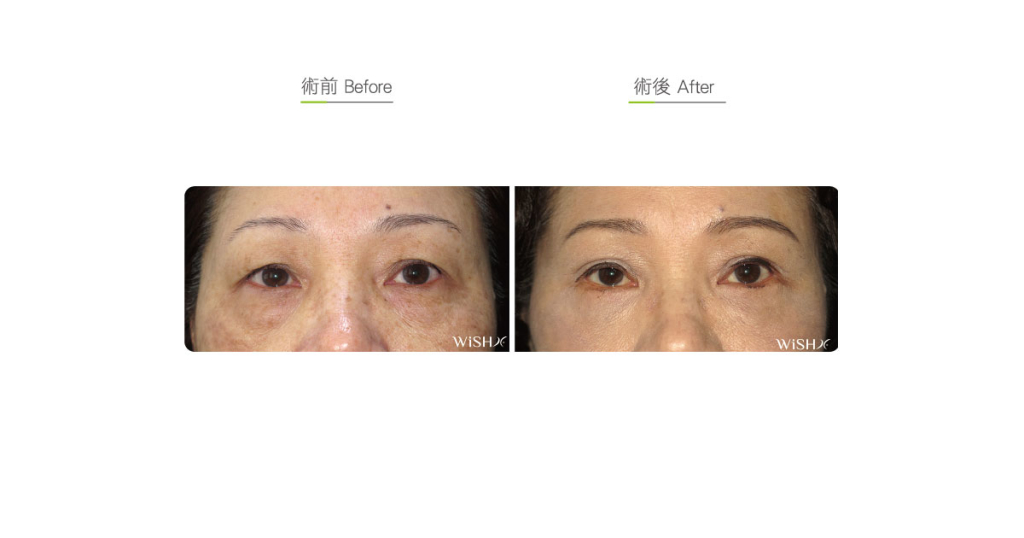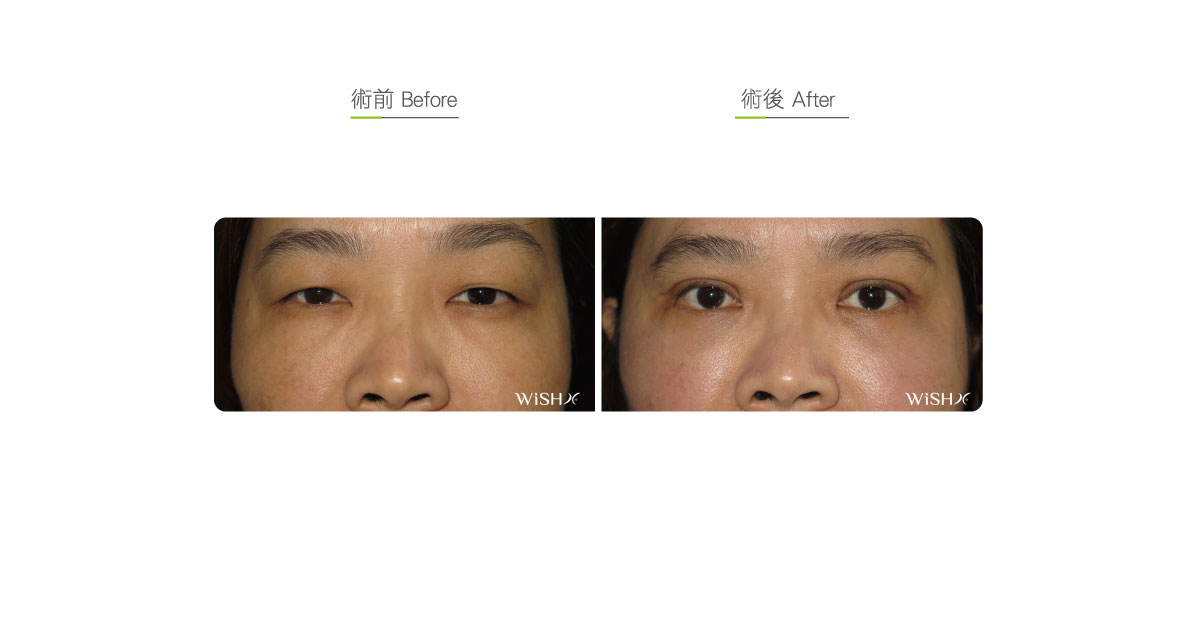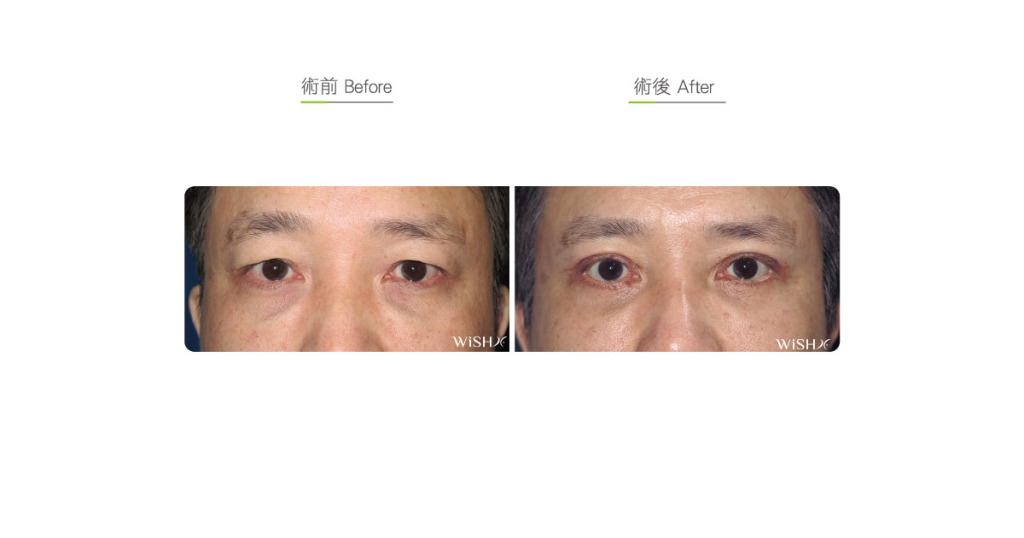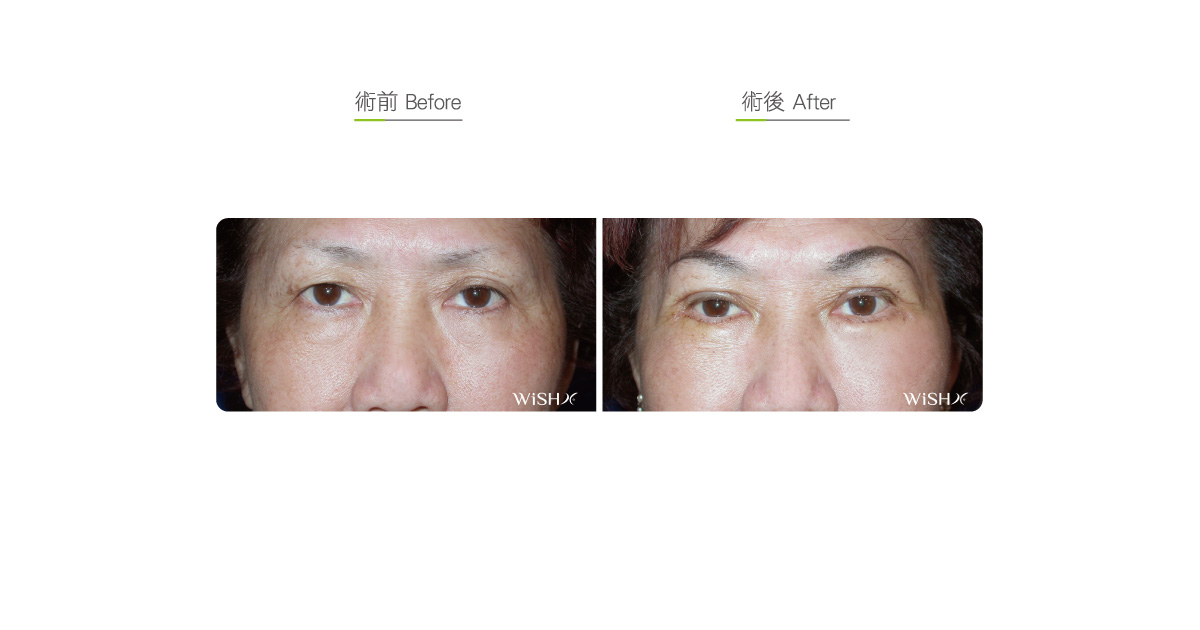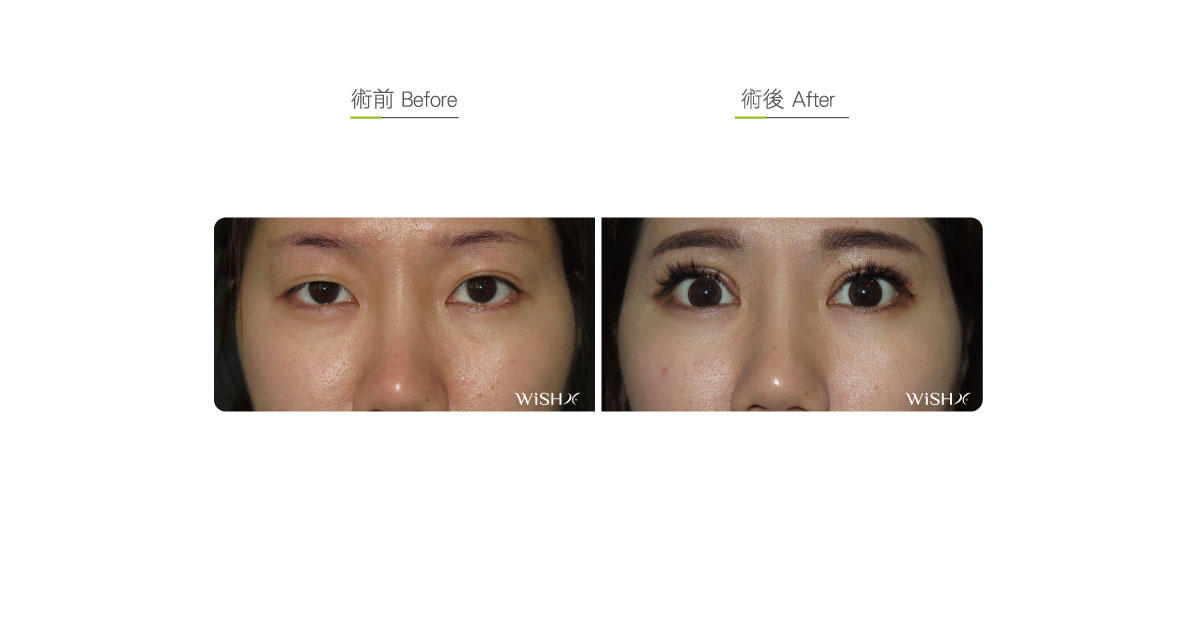Full-incisional double eyelid surgery
This is also called traditional double eyelid surgery. It is different from Korean-style mini-invasive double eyelid surgery in the correction objective and technique and is mainly indicated for middle-aged and older populations patients having eyelid laxity or drooping. This surgery is conducted by making an incision from the medial canthus to the lateral canthus at the upper eyelid to first resect the excess lax or sagged skin and then remove orbital fats before fixating new double eyelid folds. Its effects are improving eyelid ptosis; solving correcting skin laxity and, fat bulging, making profound and loss of double eyelid folds; and also enjoying a longer duration of results than mini-invasive (Korean-style) double eyelid surgery, the effects of which generally lasts for at least 10 years. Regarding the disadvantages, because the relatively long surgical incision poses greater trauma to tissues and partial eyelid skins and muscles should be excised before re-stitching, the postoperative recovery time is relatively longer than that of mini-invasive double eyelid surgery. Besides, because stitching procedures are subtle and complex, the accuracy of stitching and measurement by the physician decides the surgical results, so patients are more vulnerable to have complications such alikes asymmetrical eyelids or scar adhesion. Generally, it will take 3–6 months of observation on average to finally confirm the shape and symmetry of the double eyelid folds.
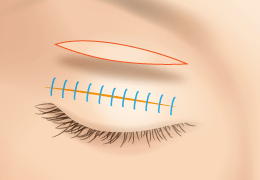
Surgical conditions
Duration
- Type of anesthesia: IV sedation + local anesthesia
- Surgical incision: An incision from the medial canthus to the lateral canthus at the upper eyelid
- Recovery: Approximately 3 months
- Removal of stitches: 7 days
General instructions
Fast from food and water on the day of operation
- Avoid smoking, alcohol, and irritating foods for 1 month postoperatively.
- Apply a warm pack for 3 months postoperatively for the eyelid swelling to subside.
Ideal candidates
- Middle-aged and old patients with eyelid laxity or drooping (blepharochalasisblepharochlalsis)
- Patients with severe eyebrow compression to the eye
- Those desiring profound, distinct, and persistent double eyelid folds
- Those having compensatory ptosis that needs to be corrected, but who are unsuitable for micro-invasive double eyelid surgery
Potential complications
- Eyelid asymmetry
- Exceedingly deep eyelid folds
- Scar adhesion
- Asymmetrical eyes
- Ptosis
- Eyelideyelid chronic edema(blepharedemablepharoedema)
Surgical advantages
-
It effectively corrects ptosis and sagging of the eyelid tail.
-
Double eyelid folds are obvious and long lasting (at least 10 years).
-
It simultaneously corrects asymmetrical eyes or levator palpebrae muscle weakness as well as other potential problems.
-
It can concurrently transfer fats to alleviate aging lipoatrophy or eye socket depression.
-
It effectively sculpts profound double eyelids.
Surgical drawbacks
-
Postoperative swelling or pre-tarsal edema (lymphedemablepharedema) is relatively distinct.
-
The sSurgical incision is relatively long, with scars difficult to hide or disappear.
-
The pPostoperative recovery is long, which and takes approximately 3–6 months to present natural results.
-
It is more likely to cause scar adhesion or eyelid fold asymmetry.
-
The pPostoperative eye shape and expression may change.
-
The surgery is relatively irreversible.
Possible procedures in conjunction
Comparison between traditional incision double eyelid surgery and micro-invasive double eyelid surgery
| Traditional double eyelid surgery (full incision method) | Mini-invasive double eyelid surgery (half-incision/triple micro-incisions) | |
|---|---|---|
| Ideal candidates | Middle-aged and old patients | Young patients or those with mild ptosis |
| Desired results | Correct eyelid laxity or ptosis due to aging | Sculpt double eyelids or achieve the effects of eye enlargement |
| Surgical duration | 1.5 h | Within 1 h |
| Wound length | Long | Short |
| Tissue damage | Much | Less (minimally invasive) |
| Postoperative recovery | Slow (3–6 months) | Rapid (2–3 months on average) |
| Surgical scar | Obvious | Mild |
| Irreversible side effects | Probable | No |
| Asymmetrical eyelid repair | Revision cutting | Micro-adjustment |
| Postoperative stitch removal | Yes | Yes |
| Concurrent medial canthoplasty | Yes | Yes |
| Levator muscle correction | Yes | Yes (half-incision method) |
| Result durability | Over 10 years | Approximately 8 – 10 years |

